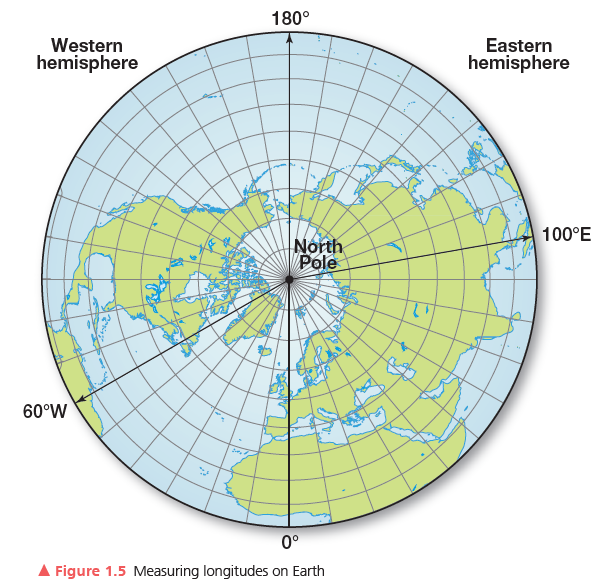Figure 1.5 is a view of Earth from directly above the North Pole; the equator is the full circumference around the edge. A line has been drawn from the North Pole to the equator and labeled 0°, representing the prime meridian. Earth’s prime meridian through Greenwich, England, was not generally agreed to by most nations until 1884. To the right of 0° on the diagram is the Eastern Hemisphere, and to the left of 0° is the Western Hemisphere.
a) Label both the Eastern Hemisphere and the Western Hemisphere.
b) Extend another line from the North Pole to the other side of Earth, opposite the prime meridian, and label it 180°. You now have marked the line that is the International Date Line, which extends from North to South Poles on the opposite side of Earth from the prime meridian.
c) Using your protractor, measure, draw, and label the meridians that are 100° east and 60° west of the Greenwich meridian.
d) Finally, locate, draw, and label the meridian that marks your present longitude.

You might also like to view...
What statement best describes a mole?
A. the amount of molecules or atoms in 1 gram of something B. a little furry mammal that lives in the ground C. a very small number chemists use to count atoms or molecules D. It is a very large number chemists use to count atoms or molecules. E. none of the above
Human wisdom teeth are examples of ____ since their functionality has changed over time
a. homologous structures b. analogous structures c. vestigial structures d. extra appendage e. superfluous organs
What is the restoring force of a wave?
A) The force of that creates the wave B) The force that returns water to a calm state C) The force that determines a wave's size D) The force that allows waves to build energy
The greatest tidal range occurs farthest from the amphidromic point.
Answer the following statement true (T) or false (F)